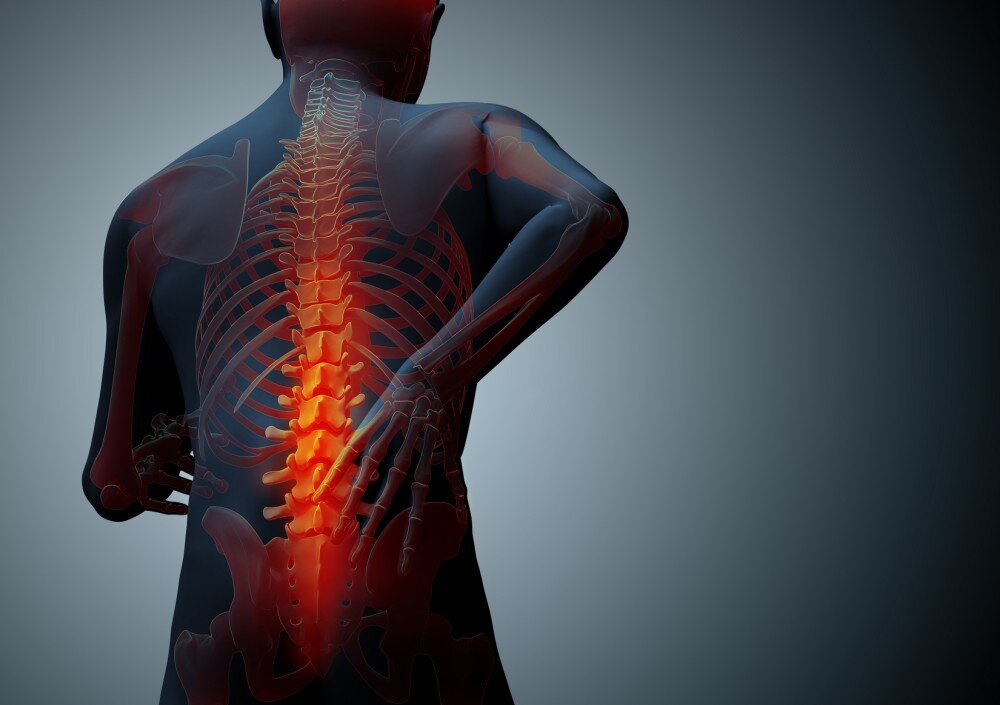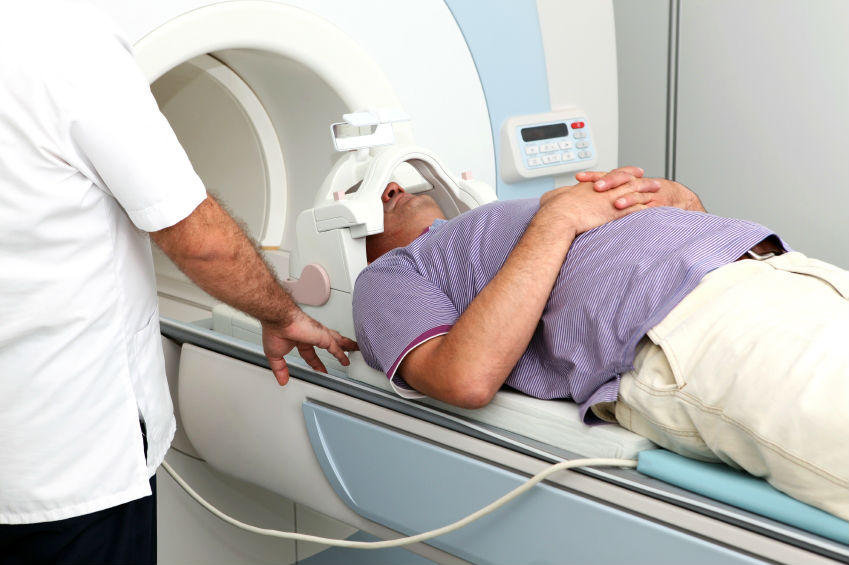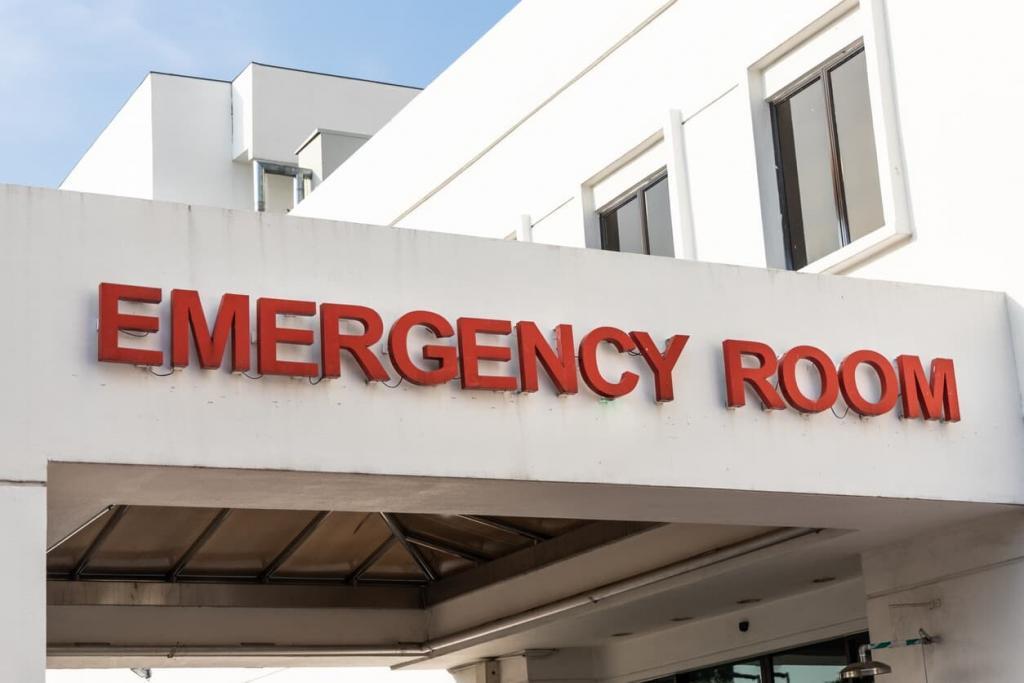Back Pain After Car Accident – Back Injury From Car Accident
Back pain is a common complaint among victims of a car accident. These pains may last months or even years if not identified and treated.
When trying to prove your case after a car accident, it is crucial to show the level of pain you are experiencing, what is causing it, and how long it is expected to last. After years of experience handling car accident claims, our legal team has come to understand which tests offer the needed results to help recover the full compensation for your back injuries from a car accident.
FREE CASE EVALUATION

25 Years Only Car Accidents
Thousands Of Cases
Millions Recovered
Before your treating physician can diagnose your neck or back pain, they will need to conduct a thorough examination and document the events that led up to your injury. It is important to give as many details about the accident as you can remember, including the vehicle’s speed and the area in which it collided. This information can help the physician pinpoint the source of your pain.
Diagnosing the Cause of Neck or Back Pain after a Car Accident

MRI v. Nerve Conduction Study (EMG)
The Physical Exam
The physician will conduct routine tests to determine where the neck or back pain originates. You will be asked to twist, bend, and move to see which motions bring on bursts of pain. They will also look for signs of lost flexibility.
Magnetic Resonance Imaging (MRI)
An MRI diagnostic tool can create a real-time 3-D spine image. This will show changes in the soft tissues like nerves and ligaments to help a physician isolate the area where the pain originates. An MRI is also helpful in diagnosing herniated discs and other back injuries from car accidents.
Electromyography (EMG)
Your treating physician might also order an EMG test. This test can examine the function of the nerves in the back and neck by placing tiny electrodes in the lower extremity muscles. The electrodes read the electrical signals in the muscles to determine if a nearby nerve is being pinched, helping to measure the exact conditions of the nerves.
While the MRI can provide a physical picture of the damage to your neck and spine, the EMG can measure the extent of your injury. Together, the two can provide a perfect analysis of the neck and spine to submit as evidence of your back injury from the car accident.
Types of Back Injuries
The back is a complex network of bones, muscles, nerves, and other tissues that extend from the neck to the pelvis. Many injuries can occur to a person’s back. The lower back is the most common site of back injury and pain. Some of the most common types of back injuries from car accidents include:
- Herniated Disc
- Spinal Cord Injury
- Compression Fractures
- Sprains and Strains
Herniated Disc
Small, sponge-like discs cushion the bones in the back that form the spine. When a disc becomes damaged, it can break open or bulge. This is also often referred to as a slipped or ruptured disc.
A herniated disc can occur anywhere in the spine, but it is more common in the lower back. An injury to the spine can cause small tears or cracks in the hard outer layer of the disc. When this happens, the soft gel inside the disc can leak out or bulge.
Some common symptoms of a herniated or ruptured disc may include pain and numbness in the back, leg, or buttock.
Spinal Cord Injuries
A spinal cord injury (SCI) is a trauma-related injury to the nerves or the bones and tissues surrounding them. The spinal cord consists of many nerves that carry impulses to and from the brain and out to the rest of the body. Depending on where the injury is, the symptoms can vary from pain to paralysis.
There are two types of spinal cord injuries: complete and incomplete. In the case of a complete injury, all sensation and voluntary movement below the affected area are lost. Conversely, an individual can function below the injured area with an incomplete injury.
Compression Fractures
The spine is made up of bones that are called vertebrae. When one of these vertebrae breaks and then collapses, this is known as a vertebral compression fracture. This type of back injury most commonly occurs in the middle portion of the spine. When this happens, it can put pressure on the spinal cord. These back injuries can cause severe pain and may result in chronic back pain.
Sprains and Strains
Sprains and strains have similar symptoms. A series of ligaments and muscles hold the bones in your spinal column in place throughout your back. A sprain occurs when a ligament is stretched or torn, while a strain occurs when a muscle or tendon is stretched or torn.
Symptoms of a lower back strain are pain and stiffness in the back, buttocks, and legs.
Chronic Back Pain After a Car Accident
Chronic back pain, characterized as pain in the back that persists beyond six months, afflicts millions of Americans. It can manifest in varying degrees of severity, from minor inconvenience to excruciating and incapacitating pain.
While chronic pain typically stems from an initial injury, such as a car accident, it can also exacerbate preexisting issues. Coping with chronic back pain can give rise to additional complications, such as anxiety, fatigue, and stress, underscoring the need for ongoing medical care to manage the condition.
The three different types of back injuries that could cause a broken back include:
- Fractures occur when more pressure is exerted on the bone than it can take. This can cause the vertebrae to break or collapse. If the trauma is severe, it can push the broken bone fragments into the spinal canal.
- Dislocation occurs when the discs or ligaments that connect two vertebrae are torn or stretched, causing the bones to push out of alignment.
- Fractured dislocations: This type of back injury combines a fracture and a dislocation. A fractured dislocation is a severe injury often requiring surgical repair.
Common symptoms of a broken back
When a person suffers a broken back in a car accident, they will likely experience severe back pain and other symptoms. While back pain could also result from a less severe injury such as a back sprain, it is always important to seek medical attention immediately. Timely treatment could mean the difference between complete recovery and a lifetime of disability. Some common symptoms to watch out for include:
- Pain
- Tingling
- Numbness
- Weakness
- Muscle Spasms
- Stooped Over Posture
- Inability to Move
- Difficulty Walking
When a person suffers a broken back, the pain will likely increase when the victim tries to walk or attempts to perform even simple movements such as stretching or bending down.
Treatment options for a broken back
When someone suffers a broken back, the first step should be immobilizing the back to prevent further injury. If the victim cannot receive medical attention immediately, they can use over-the-counter medication to relieve pain and ice to reduce inflammation.
When the victim reports to the emergency room with a back injury after a car accident, the doctor may perform a physical exam and order X-rays to diagnose the exact problem and determine the best possible course of treatment.
Common treatments for back injuries include:
- Bed Rest
- Pain Medication
- Anti-inflammatory medication
- Back Brace
- Surgery
Surgery may be the best recourse for severe back injuries from car accidents, such as those with a risk of bone fragments damaging the spinal cord. The car accident victim may require physical therapy for an extended period to regain mobility and strengthen the back.
Common types of back surgeries
Four common types of back surgeries are often needed after a severe back injury resulting from a car accident. These include:
- Spinal Fusion – This surgery treats various spinal conditions, including herniated discs, degenerative disc disease, and spinal stenosis. The surgeon will use bone grafts, metal implants, and/or screws to fuse two or more vertebrae together during the surgery. The bone grafts serve as a bridge between the vertebrae, promoting the growth of new bone tissue that eventually fuses the vertebrae. This is done to stabilize the spine, alleviate pain, and correct deformities. Spinal fusion surgery is typically performed under general anesthesia and can take several hours. Recovery time can vary depending on the extent of the surgery but typically includes a period of immobilization and rehabilitation to help patients regain mobility and strength.
- Laminectomy – This surgical procedure removes the lamina, the rear portion of the vertebra covering the spinal canal, to relieve pressure on the spinal cord or surrounding nerves. This pressure can develop after a car crash; however, it is also common among people with spinal arthritis.
- Vertebroplasty – This surgical procedure helps stabilize the spine in case of a spinal fracture resulting from high-speed car accidents. It is minimally invasive and involves creating a small hole in the back through which special bone cement is injected. This acrylic bone cement fills up the spaces and cracks in the bones and acts as an internal cast.
- Diskectomy – This surgical procedure involves removing a portion of the herniated disc in the spine. Herniated discs often compress or irritate nearby nerves and cause intense pain. Besides the pain, the compression can cause weakness or numbness in the arms, neck, and legs. The surgeon uses a small camera and a minimally invasive incision to treat the herniated disc during the surgical procedure.
Although these surgical procedures have become less invasive and more efficient, they are still major procedures with long recovery times. During the recovery period, the car accident victim may be unable to work or perform daily activities, which can result in lost personal time and income.
When Does an Injured Patient Require Back Fusion Surgery?
Spinal fusion is generally required when a patient has injured the discs or vertebrae in the neck or back. The injury can occur due to twisting, falling, or an impact injury caused by a jolt that leads to a fracture or herniated disc. This often happens in traumatic car accidents. If the patient has constantly been in pain after the injury, they would probably require back fusion surgery. Such pain is normally caused by body movement that exerts pressure against the spinal nerves and is often disabling. Back fusion surgery stops this movement of the vertebrae and treats the cause of pain.
The Importance of a Medical Exam
Back injuries are common after car accidents and can happen anywhere along the spine or across the shoulders. These injuries can result from strains, sprains, spinal damage, or disc injuries, and their symptoms may not show up immediately. That’s why it’s crucial to seek medical attention promptly, regardless of how you feel following an accident. Delaying treatment could jeopardize your chances of obtaining compensation for your injuries. Therefore, it’s imperative to undergo an immediate medical examination after any car accident, regardless of its severity.
What is an epidural?
An epidural is a medical procedure that involves injecting anti-inflammatory medication into the epidural space, the area between the spinal cord and the dura mater. This helps to alleviate nerve pressure and numb pain in the affected area. It’s important to note that an epidural steroid injection differs from the epidural anesthesia administered during surgeries or childbirth.
The patient is typically asked to lie face down on an X-ray table during an epidural. The injection is then administered into the lower back, and fluoroscopy may be used to ensure proper needle placement. Patients are advised to stay still during the procedure, even if they feel some pressure in the area. After the procedure, patients are typically monitored for 15-20 minutes before being discharged. The effects of the epidural can take anywhere from 1 to 7 days to fully kick in. Overall, epidural injections are a quick and effective method for managing pain and can be performed in a clinic or hospital setting.
Risks and side effects of epidural
While this is generally a safe procedure, some complications may exist. Some of the common complications may include:
- A headache, Stomachache, Dizziness
- Allergic reaction to the medicine
- Leg pain from nerve root damage
- Spinal epidural hematoma, a serious condition requiring immediate medical attention
- Brain or nervous system problems
- Spinal infections
Some side effects of a spinal epidural include:
- Anxiety
- Sleeplessness
- Steroid flush or facial flushing
- Increase in pain in the area
- Headaches that may take 24 hours to resolve
- Fever
Nearly 50 percent of people find epidurals effective for short-term relief. The injection may relieve symptoms for weeks or months; however, the effects are unlikely to last longer. Following this treatment with regular exercise is crucial, as it will help relieve pain even as the effect fades. If back pain returns, you may need another epidural shot.
Recovering Compensation for Epidural Steroid Injections
Epidural injections can be costly, typically ranging from $2000 or more. Additional procedures such as fluoroscopy may further increase the costs.
However, you may be entitled to compensation if you sustained an injury due to another driver’s negligence. To have a valid claim, you must establish several factors, including that the other driver had a duty of care towards you, they breached this duty by driving recklessly, intoxicated, or ignoring traffic signals, the breach of duty was the cause of the accident, and as a result, you suffered damages such as medical expenses and lost wages.
If you can prove these four elements, you may be able to recover any costs related to your injuries, including expenses related to your back pain caused by the car accident. Speaking with an experienced St. Louis car accident attorney as soon as possible after an accident is essential to protecting your rights and ensuring you receive fair compensation.
Case Study – Back Injury to Lumbar Spine
Back injuries to the lumbar spine can be challenging to diagnose and may not manifest immediately after a car accident. This was the situation for a St. Louis driver who experienced a disc bulge and lumbar spine injury following a car crash. The case was resolved for the policy limit of $100,000 after presenting compelling medical evidence that the car accident was the cause of the injuries.
Determining the Value of Your Back Injury From a Car Accident
A car accident can happen in a fraction of a second, but the pain and suffering can last a lifetime. An auto accident lawyer can examine different factors following the crash to create a case that accurately reflects your pain and suffering.
The Long-Term Impact of Your Back Injury
Back injuries from a car accident can range in severity from mild to extremely debilitating. Chronic pain resulting from a back injury can profoundly impact the victim’s quality of life.

The Extent of Your Losses
When evaluating a back injury case, a jury will consider the financial burden the victim has endured and how their life has been affected. Keeping a detailed diary can help to document missed events, activities that can no longer be enjoyed, and any negative impact on mental health and well-being.
Lost Wages
Back injuries from a car accident frequently result in missed workdays and lost wages, creating a significant financial burden. However, victims of car accidents resulting in back injuries may be entitled to compensation for lost wages.
Compensation for Future Medical Care
In many cases, the impact of a back injury from a car accident is long-lasting, requiring ongoing medical treatment and care. This ensures the victim has the necessary resources to receive treatment even after the case. It is critical to factor in the cost of future medical care when seeking compensation in a car accident lawsuit involving a back injury.
Free Consultation with a St. Louis Car Accident Lawyer
Don’t talk to an insurance claims adjuster before speaking with The Hoffmann Law Firm, L.L.C. We can help you avoid making statements that may affect the outcome of your case. The consultation is free; you don’t pay unless we get you money!


